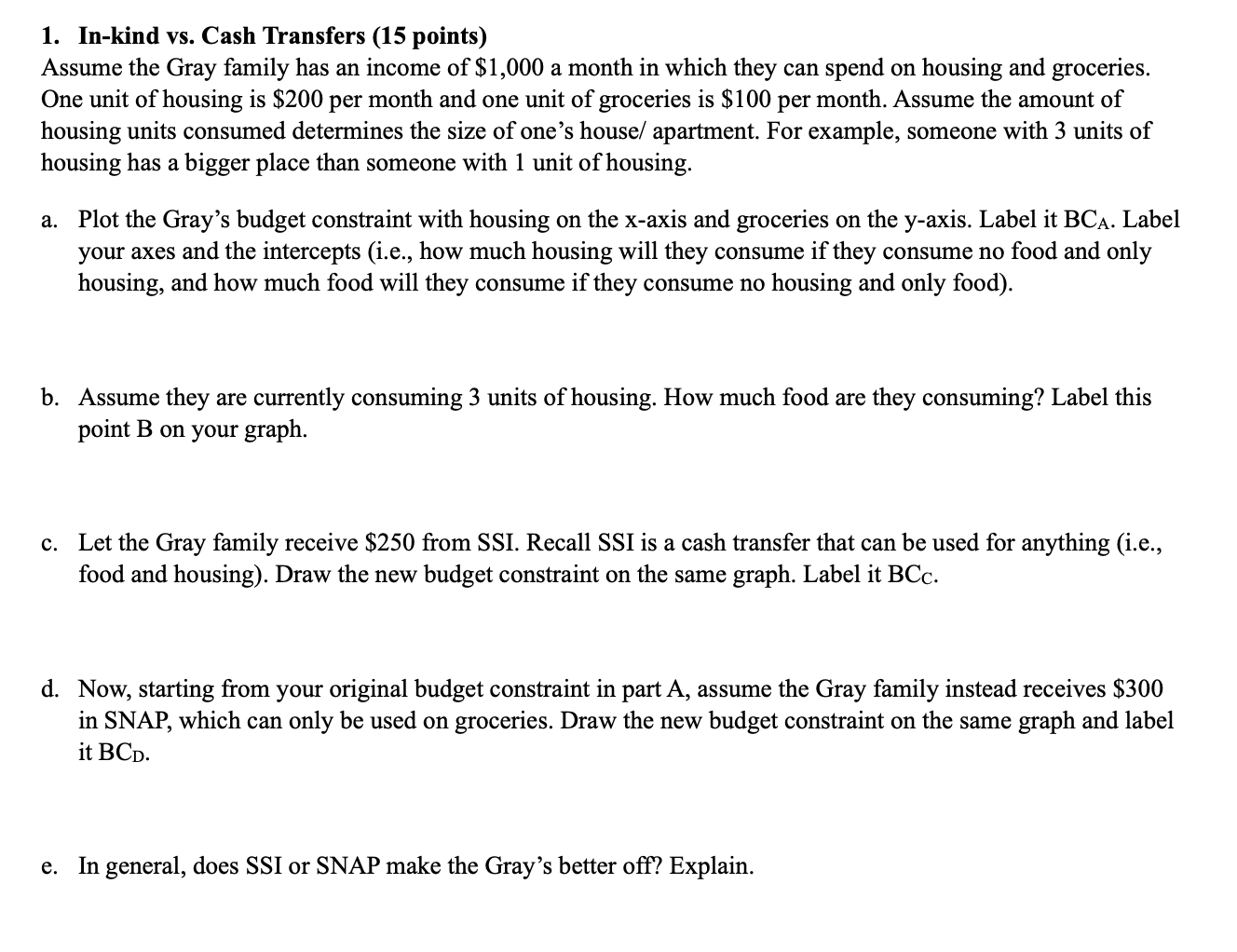
1. In-kind vs. Cash Transfers (15 points) Assume the Gray family has an income of $1,000 a month in which they can spend on housing and groceries. One unit of housing is $200 per month and one unit of groceries is $100 per month. Assume the amount of housing units consumed determines the size of one's house/ apartment. For example, someone with 3 units of housing has a bigger place than someone with 1 unit of housing. a. Plot the Gray's budget constraint with housing on the x-axis and groceries on the y-axis. Label it BCA. Label your axes and the intercepts (i.e., how much housing will they consume if they consume no food and only housing, and how much food will they consume if they consume no housing and only food). b. Assume they are currently consuming 3 units of housing. How much food are they consuming? Label this point B on your graph c. Let the Gray family receive $250 from SSI. Recall SSI is a cash transfer that can be used for anything (i.e., food and housing). Draw the new budget constraint on the same graph. Label it BCc. d. Now, starting from your original budget constraint in part A, assume the Gray family instead receives $300 in SNAP, which can only be used on groceries. Draw the new budget constraint on the same graph and label it BCD. e. In general, does SSI or SNAP make the Gray's better off? Explain. 1. In-kind vs. Cash Transfers (15 points) Assume the Gray family has an income of $1,000 a month in which they can spend on housing and groceries. One unit of housing is $200 per month and one unit of groceries is $100 per month. Assume the amount of housing units consumed determines the size of one's house/ apartment. For example, someone with 3 units of housing has a bigger place than someone with 1 unit of housing. a. Plot the Gray's budget constraint with housing on the x-axis and groceries on the y-axis. Label it BCA. Label your axes and the intercepts (i.e., how much housing will they consume if they consume no food and only housing, and how much food will they consume if they consume no housing and only food). b. Assume they are currently consuming 3 units of housing. How much food are they consuming? Label this point B on your graph c. Let the Gray family receive $250 from SSI. Recall SSI is a cash transfer that can be used for anything (i.e., food and housing). Draw the new budget constraint on the same graph. Label it BCc. d. Now, starting from your original budget constraint in part A, assume the Gray family instead receives $300 in SNAP, which can only be used on groceries. Draw the new budget constraint on the same graph and label it BCD. e. In general, does SSI or SNAP make the Gray's better off? Explain







